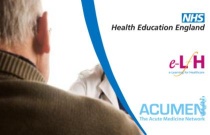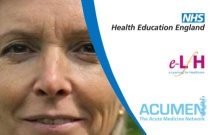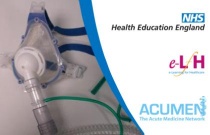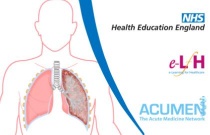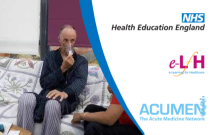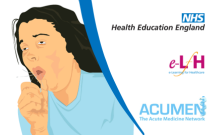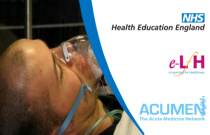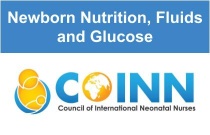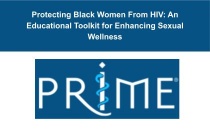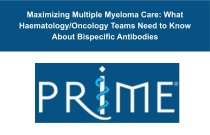Case Report: Clinical manifestation and dental management of Papillon-Lefèvre syndrome
Yasmin Mohamed Yousry,Amr Ezzat Abd EL-Latif,Randa Youssef Abd El-Gawad
Papillon-Lefèvre syndrome (PLS) is an autosomal recessive disorder that typically becomes apparent from one to five years of age, which coincides with the timing of eruption of primary dentition. The estimated prevalence of the syndrome is 1–4 cases per million individuals. The exact etiopathogenesis of the syndrome is relativel....
Effect of gestational diabetes mellitus on maternal thyroid function and body mass index
Elrazi A. Ali,Hala Abdullahi,Duria A. Rayis,Ishag Adam,Mohamed F. Lutfi
Abnormal thyroid function and glucose tolerance have been both reported during pregnancy. Weight gain is common among subjects with insulin resistancen
Systemic lupus erythematosus and Hodgkin disease
Besma Ben Dhaou,Fatma Boussema,Zohra Aydi,Lilia Baili,Lilia Rokbani
Systemic lupus erythematosus (SLE) is associated with lymphoproliferative diseases such as Hodgkin’s lymphoma (HL)n
Incisional correction of corneal astigmatism during phacoemulsification – a randomized trial
Najah K. Mohammad,Tamer F. Elewa,Enas B. Aldehaimy,Tareq A. Almamoun
Currently cataract surgery is considered to be a refractive surgery, with the main therapeutic goal of achieving emmetropia; as a result, correction of corneal astigmatism becomes essential for such an operation.. It is possible to reduce pre-existing corneal astigmatism by creating a clear corneal incision at the steep meridian....
Cost analysis of outpatient services for major external structural birth defects: An ingredient approach in selected hospitals in Kiambu County, Kenya
George N. Agot,Joseph K. Wang'ombe,Marshal M. Mweu
Major external structural birth defects (MESBDs) are defined as physical abnormalities of intrauterine origin present from birth, detectable visually, and having significant health and development impacts. MESBDs continue to occur exerting an enormous economic burden on individuals and health services in developing countries; ho....
Adolescent girls’ attitudes toward female genital mutilation: a study in seven African countries
Koustuv Dalal,Zhanna Kalmatayeva,Sourav Mandal,Gainel Ussatayeva,Ming Shinn Lee,Animesh Biswas
Female genital mutilation (FGM) is a major public health problem in some parts of the world, especially in Africa and the Middle East. The first step toward changing the practice of FGM is to change attitudes toward it, even though this can be difficult and psychologically painful. More women than men support the practice. A mul....
Local indigenous knowledge about some medicinal plants in and around Kakamega forest in western Kenya
Nickson Erick Otieno,Caleb Analo
Although community development goals are not always consistent with biodiversity conservation objectives. Like in many parts of the developing world, there is a growing upsurge in demand for herbal and other traditional remedies for various ailments among communities in Kenya. This is due either to the increasing cost of convent....
Self-reported COVID-19 among physicians: An Egyptian online study during the pandemic
Hala Samir Abou-ElWafa,Abdel-Hady El-Gilany,Ahmed A. Albadry
COVID-19, has become a universal threat to public health. During the initial wave of the COVID-19 pandemic, overstrained healthcare systems in severely affected countries left healthcare workers fighting with prolonged work hours, intense emotional stress, and fatigue. Speedily declining resources, lockdowns, and a high demand f....
History of Acute Asthma
Ramin Baghai-Ravary
This session examines the history of acute asthma presentation and how it relates to the underlying pathophysiology. It goes on to identify important indicators of acute and life-threatening disease.
Differentiating COPD and Asthma
John Hurst
COPD and asthma are both common conditions that affect the airways and can present in similar ways. It is important to differentiate between the two and understand how this can be done. This session is designed to address these questions.
The Difference Between BiPAP and CPAP
Phil Raines
This session discusses the principle differences between bi-level positive airways pressure (BiPAP) and continuous positive airways pressure (CPAP), and provides a brief summary as to how they work and when to use them.
Management of Drug Induced Breathlessness
Elora Mukherjee
This session discusses the investigation and management of patients with drug induced breathlessness, a commonly overlooked presentation with potentially long-term adverse drug effects. The session looks at how to interpret test results to confirm the diagnosis and how best to manage the patient thereafter.
Definition and Description of Bronchiectasis
Gaurav Agarwal
This session describes bronchiectasis and its causes.
Non-drug Management of Breathlessness
Tim Peel
This session reviews non-drug interventions within an integrated approach to the management of breathlessness.
Drug-induced Cough and Bronchospasm
Salman Haider
This session reviews the possible presentations of drug-induced cough and its causes.
Presenting Features of Pulmonary Embolism
Amy Daniel
Pulmonary embolism is difficult to detect because patients present with a wide array of symptoms and signs. This session will highlight the breadth of clinical presentations and which signs and symptoms are common in particular age groups.
Sickle Cell Anaemia: Disease Complications and Therapeutic Interventions
Dr Garrick Laudin
The talk focuses mainly on the multi-organ involvement by sickle cell disease (SCD)/ sickle cell anaemia (SSA) as well as awareness and screening of the disease complications. A brief overview of transfusion therapy and other therapeutic modalities in the management of sickle cell anaemia will be undertaken.
Showcase of a Community Quality Improvement Model for Maternal and Child Health Services in Kenya
Rachel Ambalu
Maternal and child health outcomes in Kenya has for a long time been hindered by poor quality and underutilization of services particularly in low-income and rural households. In Kenya, guidelines have been developed and activities undertaken aimed at improving the quality of health services in health facilities and communities.....
Webinar: "The Nighttime Hustle" - Restless Legs in Chronic Kidney Disease: More Than Just a Twitch
Dr Riona Pais, Dr Jessica Sun and Sr Natty Miles
Restless legs syndrome (RLS) affects 1 in 10 individuals and is 2-3 times more prevalent with people with chronic kidney disease (CKD). This webinar will focus on what is RLS, its prevalence, pathophysiology, factors affecting RLS status and severity, and the non-pharmacological and pharmacological management of RLS.
Newborn Nutrition, Fluids and Glucose
Dr. Sue Prullage and Fauste Uwingabire
This webinar, of utmost importance in the field, will delve into crucial aspects ofneonatal nutrition, fluid and feeding management, and glucose monitoring for the small andsick. We will also engage in practical exercises, such as calculating feedings, fluids, and GIR, to enhance your understanding and skills.
Trauma-Informed HIV Care: Meeting People Where They Are
Samantha V Hill, Tiara Willie, David Koren, Darryl C Branch, Brad Boyette, Kristi Kay Orbaugh, Gabriela Andonie
0.25 Hours
Trauma is pervasive among people with HIV and, when unaddressed, negatively impacts engagement in care and overall health outcomes. Tune in as experts in HIV and mental health hold discussions, featuring: • A patient testimonial sharing lived experiences • How to incorporate trauma screening into holistic HIV care • Best....
Protecting Black Women From HIV: An Educational Toolkit for Enhancing Sexual Wellness
Oni J Blackstock, Ricardo Correa, Abimbola Farinde, Joyce M Knestrick
1.00 Hours
Rising rates of new HIV and sexually transmitted infections (STIs) among Black women highlight the need for improving awareness and access to preventative services. This toolkit provides resources for you to lead interactive educational sessions aimed at empowering Black women to confidently advocate for their sexual health. The....
Multidrug-Resistant HIV: Tailoring Treatment for Challenging Cases
Sorana Segal-Maurer,Onyema Ogbuagu, David Koren, Brad Boyette, Kristi Kay Orbaugh, and Gabriela Andonie
1.00 Hours
Antiretroviral drug resistance poses persistent challenges to achieving viral suppression. As HIV treatment options rapidly evolve, providers need to stay abreast of the latest scientific advancements to deliver individualized approaches while fostering long-term engagement and adherence. Tune in and gain insights from two di....
Maximizing Multiple Myeloma Care: What Haematology/Oncology Teams Need to Know About Bispecific Antibodies
Ajai Chari, Brad Boyette, Ricardo Correa, Joyce M Knestrick
0.50 Hours
Integrating bispecific antibodies (bsAbs) for multiple myeloma (MM) into clinical practice requires coordinated efforts and comprehensive knowledge. In this on-demand video, expert faculty will guide hematology/oncology care teams, as well as internists/hospitalists, through practical strategies for coordinating bsAb referrals a....
Advancing Evidence-Based Immunotherapy Treatment in Early-Stage Melanoma
John M Kirkwood, Jason J Luke, Donna M Chiefari, Ricardo Correa, Stephanie Joyce
2.00 Hours
The treatment landscape for early-stage melanoma has seen an exciting shift with the advent of immunotherapy in the adjuvant setting for patients who have had early-stage tumors resected. In this on-demand video, join an expert-led discussion of the latest clinical data, guideline recommendations, adverse event management, an....

